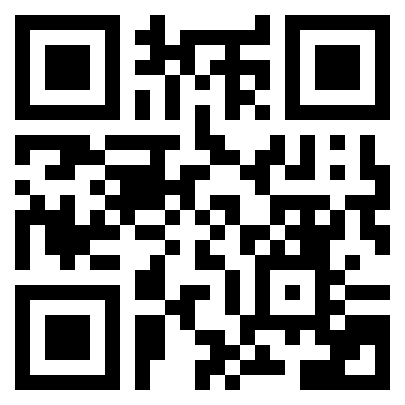- Unit 2 Marketing Processes and Planning Assignment Brief 2025-2026
- Unit 805 Strategic Communication Assignment Brief- Media Impact on International Organisations
- UNIT CMI 513 Managing Projects to Achieve Results Assessment Brief
- AFM5CGL Level 5 Corporate Governance and leadership Assignment Case Study
- Law, Policy and Ethical Practice in Health and Social Care Assignment 2025-2026
- BTEC International Level 3 in Business Pearson Set Assignment – Unit 7 Business Decision Making
- Unit 7 Budget Assignment: Effective Financial Planning, Budgetary Control, and Stakeholder Management in Dental Practice
- Level 2 NVQ Diploma in Specialist Concrete Occupations Assignment: Knowledge and Understanding of Health, Safety, Work Practices, and Concrete Application
- Level 4 SPS4064 Physiology of Exercise Assignment: Comprehensive Assessment Through MCQs and an In-Depth Marathon Running Case Study
- Communication Management Assignment: Monitoring, Evaluating, and Improving Workplace Communication Systems
- Unit 806 Culture and its Impact on Strategy Assignment: A Critical Evaluation of International Organisational Policy, Decision-Making & Stakeholder Dynamics
- CMI Unit 601 Professional Management and Leadership Practice Assignment – The Influence of Organisational Context on Management and Leadership
- ILM L 7 unit 700 Assignment : Understanding the Principles and Practice of Effective Coaching and Mentoring at an Executive or Senior Level
- A Comprehensive Assignment Report – Unit 804 Strategic Direction in Cross-Border and Global Business
- BTEC Unit 7 Calculus Assignment: Integration Methods, Motion Analysis, Work & Cooling Law Applications
- BTEC Level 3 Unit 7 Engineering Calculus Assignment: Differentiation Applications, Graphs & Optimisation Problems
- ILM Unit 8605-417 Managing & Implementing Change in the Workplace Assignment: Analysis, Opportunities & Action Plan
- 7NDEMP02 Patient Management in Advanced Collision Tumour: Surgical, Postoperative, and Prosthetic Rehabilitation Considerations
- ATHE Level 4 Unit 12 Web Design Assignment: CTO Birdwatching Message Board Using Full-Stack Development
- ATHE Level 4 Unit 15 Software Testing Assignment: TDD & BDD Strategies for Python-Based Medical Data Validator
Unit 509: Managing Stakeholder Relationships strategies, Challenges And Conflict Resolution | CMI Level 5
| University | West Notts College |
| Subject | CMI 509 Management and Leadership |
Key Information For Learners
Each task in this assessment brief has been developed to enable you to evidence achievement of the learning outcomes and assessment criteria for CMI 509: Managing Stakeholder Relationships. Each of the assessment criteria must gain a pass outcome for you to successfully achieve the unit.
Preparation for the Assessment
- Before you begin the assessment brief, please read the CMI 509 unit specifications thoroughly as only the content related to the achievement of the assessment criteria will be assessed.
- Research the topics being assessed. Suggested reading/web resources are provided on the CMI 509 unit specification. Your tutor may signpost you to relevant resources. Additionally, you may access excellent online resources at ManagementDirect. Please note that if you have a customised site, the link will differ, please contact your Centre for clarification.
- If you are enrolled on the Trailblazer Apprenticeship programme, you are encouraged to review the Apprenticeship Standard for Operations/Departmental Manager.
Completing the Assessment Brief
- The assessment brief contains a series of tasks which are clearly referenced to the relevant assessment criteria and indicative content.
- Refer to the Assessment Guidance Table at the end of the assessment brief, which outlines the requirements for a Pass or Refer.
- Evidence must be provided in the evidence booklet. Additional work-based evidence such as plans or documentation (which has been referred to within the main text) should be included at the end of the booklet marked ‘Work Based Evidence’. Appendices are not a requirement of this assessment brief. If appendices are included, these will not be marked or moderated by the CMI.
- Work-based evidence must be accompanied by a supporting statement in the learner evidence box to explain the link to the assessment criteria. Work-based evidence (where required by the task) must not exceed SIX (6) pages. Files embedded in the booklet must not exceed 10MB.
- The evidence booklet must be completed in a professional manner (e.g. applying business conventions for writing formal reports) and by using Microsoft Word, Rich Text Format, or another compatible software programme, and not in a PDF format.
- An appropriate referencing system (such as Harvard Referencing) must be used to ensure the original source(s) of quotations or models can be verified.
- Finally, you must sign the Learner Authenticity statement (an electronic signature is accepted).
Do You Need Assignment of This Question
Learner Support
For information regarding policies and procedures for assessment (e.g. special assessment arrangements, learner support, appeals, complaints, certification, confidentiality, plagiarism), you should contact your tutor or Centre manager and refer to the CMI Level 5 in Management and Leadership syllabus.
Introducing Assessment Brief CMI 509
Good relationships, whether they are with customers, suppliers, partners or staff, are a key contributor to an organisation’s success. Assessment brief CMI 509 has been designed to enable managers to evidence their knowledge and understanding of how to build stakeholder relationships that are long lasting and sustainable. Assessment focuses on the different types of stakeholder relationships and frameworks for managing these, in addition to the ability to assess the impact of stakeholder engagement on organisational performance.
Assessment Task And Word Count
Assessment brief CMI 509 features the following assessment tasks. Further detail is provided against each assessment task within the brief.
Assessment Task
- Write a report entitled:
The complexities of stakeholder relationships. (Approx. 700 words) - Write a report entitled:
Preparation for stakeholder engagement and management. (Approx. 700 words) - Write an account which uses examples to propose how stakeholder relationships should be managed.(Approx. 1250 words)
- Write an account which discusses the methods for managing conflict in stakeholder engagement.(Approx. 350 words)
Learning Outcomes Covered by Assessment Method
LO1 Understand the different types and value of stakeholder relationships
LO2 Understand the frameworks for stakeholder management
LO3 Know how to manage stakeholder relationships
LO4 Know methods for measuring the impact of stakeholder engagement on organisational performance
LO5 Know how to manage stakeholder relationships
Assessment Criteria
LO1
- 1.1 Analyse the types of stakeholder relationships within organisations
- 1.2 Examine the benefits and challenges for organisations working with different stakeholder groups
LO2
- 2.1 Examine the contractual frameworks for stakeholder engagement and management
- 2.2 Specify a process for planning stakeholder engagement
LO3
- 3.1 Analyse the role of the manager in managing stakeholder relationships
- 3.2 Evaluate the use of collaborative working techniques to manage stakeholder relationships
LO4
- 4.1 Examine methods for measuring the impact of stakeholder engagement on organisational performance
LO5
- 5.1 Discuss methods for managing conflict in stakeholder engagement
Buy Answer of This Assessment & Raise Your Grades
Guideline word count
The written word, however generated and recorded, is still expected to form the majority of assessable work produced by Learners at Level 5. The amount and volume of work for this unit should be broadly comparable to a word count of 2500-3000 words within a margin of +/-10%. The excessive use of word count is not grounds for referral, however the CMI reserve the right to return work to the Centre for editing and resubmission by the Learner.
The following are excluded from inclusion in word count, if used and not required by the assessment brief: an introduction to a job role, organisation or department; index or contents pages; headings and sub headings; diagrams, charts and graphs; reference list or bibliography; reflective statement drawn from undertaking the assignment and how this has impacted on the learner’s work. Please see the CMI Assessment Guidance Policy for further guidance.
The Types And Value Of Stakeholder Relationships
Understanding the role and value of different types of stakeholders is essential if the stakeholder relationship is to be managed effectively. The word ‘stakeholder’ can infer a host of people connected to another in a business setting covering internal, external and connected relationships. There are many challenges that occur in managing the stakeholder relationship and sensitivity and understanding is required to address issues in a proactive and professional manner.
Task 1
You are required to write a report entitled ‘The complexities of stakeholder relationships’. The report must include:
- An analysis of THREE (3) types of stakeholder relationships which occur within organisations (AC1.1)
- An examination of the benefits and challenges for organisations engaging with each of the stakeholder groups identified above. (AC1.2)
Guidance for completion of Task 1
- The report should include sub headings. You may choose to include tables and diagrams (as appropriate) to support your discussion.
- Your discussion should be underpinned with relevant theoretical principles.
- You are encouraged to consider the use of well-chosen examples from an organisation you know well or have researched.
- For learners not currently in employment, there is the opportunity to base the response to the task on organisations which work extensively with stakeholders (i.e. charitable organisations, public sector bodies such as an NHS provider or educational provider).
- For learners in work, there is the opportunity to consider the stakeholder relationships which occur in the delivery of a project or in the management of a department, in addition to the role of stakeholders within the organisation.
- Refer to the indicative content for each assessment criteria (AC) outlined in the unit specification).
Scenario A
You have been asked to lead a stakeholder group that has been formed to review the services and support given to customers. It is a challenging remit as there is a likelihood that services will need to be cut or changed.
The group comprises of internal and external stakeholders. This includes two team leaders who are based off-site, a finance officer, an equalities officer, a representative from the senior management team and three customers. There is also representation from a national consumer group who attend to represent customer interests.
The review of services and support given to customers must be completed within a six month period.
Qualitative and quantitative research will need to be undertaken to inform decision making. Given the range of internal and external stakeholders, individual roles and responsibilities will need to be determined, governance of the group established and aims and objectives set.
Are You Looking for Answer of This Assignment or Essay
Frameworks for Stakeholder Management
The success of stakeholder relationships is optimised by effective planning. This begins with a contractual framework for stakeholder engagement which clarifies the roles and responsibilities of different stakeholder groups to achieve aims and objectives within set parameters.
Task 2
Basing your response on Scenario A, your own experience of managing stakeholder groups or the management of stakeholder groups in an organisation you know well or have researched:
Write a report entitled ‘Preparation for stakeholder engagement and management’.
To complete the report you are required to:
- Using examples examine TWO (2) contractual frameworks used for stakeholder engagement and management (AC2.1)
- Specify the process you would use to plan stakeholder engagement (AC2.2)
Guidance for completion of Task 2
- The report should include sub headings. You may choose to include tables and diagrams (as appropriate)
- You are encouraged to consider the use of well-chosen examples from an organisation you know well or have researched.
- Refer to the indicative content for each assessment criteria (AC) outlined in the unit specification.
Managing Stakeholder Relationships and Measuring Their Impact on Organisational Performance
Managing stakeholder relationships requires planning and insight. The approach needs to be tailored to meet the needs of the stakeholder groups. A manager must understand their role in facilitating and leading stakeholder relationships, the use of collaborative working techniques to enable delivery through others and methods for measuring the impact of stakeholder engagement on organisational performance.
Task 3
Basing your response on Scenario A, your own experience of managing stakeholder groups or on an organisation you know well or have researched:
Write an account which uses examples to propose how stakeholder relationships should be managed.
The account must:
- Analyse the role of the manager in managing stakeholder relationships (AC3.1)
- Evaluate the use of collaborative working techniques which can be used to manage stakeholder relationships (AC3.2)
- Examine methods for measuring the impact of stakeholder engagement on organisational performance (AC4.1)
Guidance for completion of Task 3
- The account should include sub headings. You may choose to include tables and diagrams (as appropriate).
- Your discussion should be underpinned with relevant theoretical principles.
- You are encouraged to base your response on scenario A or consider the use of well-chosen examples identifying stakeholder groups from an organisation you may have managed, know well or have researched.
- Please refer to the indicative content for each assessment criteria (AC) outlined in the unit specification.
Do You Need Assignment of This Question
It can be challenging managing the expectations of different stakeholder groups. A key role of the manager is to recognise and resolve situations where conflict can arise to ensure the stakeholder relationship can be maintained.
Research commissioned to determine how and where changes to customer services could be made has been completed. To the surprise of the stakeholder group this has included some unexpected results which have caused conflict between group members and in turn with representatives of the organisation.
The customers who are representative of the organisation’s customer base are at loggerheads over the recommendations.
The last stakeholder meeting became very difficult to manage and needed to be drawn to a close due to the level and nature of conflict between members. This included:
- Claims the changes would contravene regulatory and legal frameworks (i.e. Equality Act 2010)
- Conflicting interests between stakeholders in relation to balancing the profitability and sustainability of services with increasing customer demands
- The perceived lack of empathy shown by internal stakeholders to external stakeholders and inflexibility to make concessions.
Task 4
Basing your response on Scenario B, your own experience of managing stakeholder groups or on an organisation you know well or have researched:
Write an account which discusses methods for managing conflict in stakeholder engagement (AC3.3).
Guidance for completion of Task 4
- The account should include sub headings. You may choose to include tables and diagrams (as appropriate).
- You are encouraged to base your response on scenario B or consider the use of well-chosen examples identifying stakeholder groups from an organisation you may have managed, know well or have researched.
- Refer to the indicative content for each assessment criteria (AC) outlined in the unit specification.
Buy Answer of This Assessment & Raise Your Grades
Assessment Guidance
Refer
- The submission is incomplete
- Tasks are incomplete
- Not all assessment criteria have been met
- No examples are used or the examples given do not match the requirements of the assessment criteria
- Evidence is
- Unclear
- Technically incorrect or inaccurate
- Biased
- Unprofessional language
- Poorly structured and presented
- Ideas are under-developed
- Lacks sufficient detail to show understanding of the topic
- The application of different perspectives, approaches or schools of thought is unclear or inappropriate
- Little or no evaluation of evidence has taken place
- The ability to make judgments and solve complex problems has not been evidenced
- Evidence is not directly attributable to the learner
- External sources of information are not acknowledged
- Work based evidence or artefacts (e.g. planning documents or presentation slides) do not meet the requirements of the assessment criteria and are not current (within 5 years)
Pass
- All tasks have been completed
- All assessment criteria have been met
- Examples given are well chosen and match the requirements of the assessment criteria
- Evidence is
- Well written and presented
- Contains a breadth of examples
- Accurate
- Current (e.g. use of up to date legislation)
- Authentic
- Inclusive
- Coherent
- Credible
- Technically correct
- Evidence shows understanding and application of different perspectives, approaches or schools of thought and the reasoning behind them.
- Evidence shows the learners ability to evaluate evidence and solve problems to achieve set outcomes.
- Evidence used from external sources has been correctly referenced
- Evidence is directly attributable to the learner
- Work based evidence or artefacts (e.g. planning documents or presentation slides) match the requirements of the assessment criteria and are current (within 5 years)
Are You Looking for Answer of This Assignment or Essay




